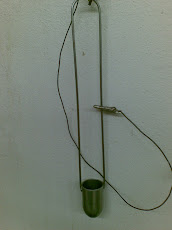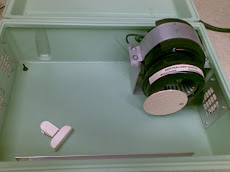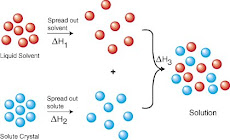Understanding The Differences Between Cleaning Chemicals
Cleaning, sanitizing and disinfecting surfaces are daily tasks for custodial workers — but how likely is it that front-line workers know the uses for each chemical and understand the differences between them?
Product manufacturers and jan/san distributors agree that knowing the difference between cleaning, sanitizing and disinfecting as applied to chemicals can be confusing. For that reason, custodial managers are encouraged to offer refresher training regularly.
Clean To Remove Soil
“Cleaning” as a noun encompasses all sorts of tasks; in fact, it is used to describe the entire industry, as well as the chores most Americans perform in their homes. But by examining the true meaning of the word as it applies to the chemical science of soil and germ removal, it becomes clear how important cleaning is to public health.One chemical manufacturer in Illinois commented that, cleaning chemicals are designed to remove soil. Any impact they have on the population of microorganisms is generally the result of the removal of that soil. The bottom line function to using cleaners is to remove visible debris, dirt and dust from a surface — an essential first step in any cleaning program. Of course, there are different types of cleaners for different types of soil. Some cleaners — those of which are on the alkaline end of the pH scale — remove greases and oils. Then there are acid-based cleaners, which are used to remove water scales and minerals. Between those two extremes are neutral cleaners used for lighter soils.From degreasers and descalers to all-purpose and glass cleaners, these chemicals are commonly used on surfaces such as counters, desks, tables, walls and floors. Thorough cleaning, spray bottles and laundered or disposable towels or mops and diluted cleaning solutions in buckets, may be the only step in a cleaning application — or it may be just the first step.
Managers should stress to their staff that cleaning is an essential step in the removal of substances from surfaces. Only after cleaning chemicals have been used — and only in certain applications — sanitizing and disinfecting should follow.
Sanitizing and disinfecting are recommended for surfaces that are touched frequently by hands or skin or that come into contact with bacteria, urine, fecal matter or bloodborne pathogens. Common applications for sanitizers and disinfectants include food service, healthcare, educational, fitness and other public facilities such as airports and shopping malls. Specifically, these chemicals are typically used in restrooms, kitchen/break rooms and on touch points.
Sanitizers are designed to reduce or kill 99.9 to 99.999 percent of listed bacterial micro-organisms on — and this is important — pre-cleaned surfaces. For surfaces where sanitizers are needed, managers can choose between two general products: food contact sanitizers and non-food contact options.
According to product manufacturers, food-contact sanitizers are part of a three step process. First, staff cleans the surface, it is rinsed and then the sanitizer is applied. These chemicals are most commonly used in food service areas on meat slicers, cutting boards and food prep tables — surfaces that come into contact with food.
“Sanitizers are generally associated with food service, where workers must reduce the micro-organisms to a level that is safe,” says Glenn Rothstein, president of Bio-Shine Inc. in Spotswood, N.J.
To accomplish this, managers train staff on chemical dwell times, which vary between sanitizers and disinfectants.
Although product advancements are entering the marketplace regularly, traditionally, sanitizer dwell times are considerably shorter than those for disinfectants, which can be up to 10 minutes. Rothstein says that workers using sanitizers can accomplish safe levels of surface micro-organisms in 30 seconds to one minute, although some products take 5 minutes.
Non-food contact sanitizers are used in two steps. First, the surface needs to be cleaned, then it is sanitized. These sanitizers are available but not widely used, say manufacturers, mainly because sanitizers have no anti-viral claims, offering no confidence of killing the flu or other viruses found on surfaces.
“When you sanitize, you are killing/reducing the bacteria on that surface, but doing nothing about viruses and fungus,” says one Wis.-based chemical manufacturer. “Sanitizing is better than cleaning alone, but the reduction of pathogen populations on surfaces is exponentially better when you use disinfectants.” - See more at: http://www.cleanlink.com/hs/article/When-Is-It-Important-To-Sanitize--16774#sthash.ZkkrsJ14.dpuf
For applications in which there are heavy soil loads, cleaning is an essential first step before disinfecting against bacteria. But in facilities where budget cuts loom and time matters, unless heavy soils are present, Rothstein suggests forgoing the cleaning step and skipping right to disinfection.
Manufacturers stress that not all disinfectants are created equal and it is important for custodial managers to do their research before purchasing. Choose a disinfectant that is most appropriate for the application. The product label should specify areas where the product is most effective, as well as appropriate dwell times to meet kill claims.
This makes label-reading crucial to choosing the right product. Disinfectants will list the types of microorganisms they are effective against, including:
• Bacteria such as E. Coli, listeria, salmonella, MRSA and, in some cases, C. diff
• Viruses such as norovirus, influenza strains, HIV and Hepatitis B and C
• Mold and mildew
• Fungi such as Athlete’s Foot
“Disinfection works by destroying the cell wall of microbes or interfering with the metabolism,” Rothstein says. “There are several types: phenolics, quats and silvers. The phenolics are the oldest form of disinfectants, but are harsh and rarely used today. Quats are the mainstream disinfectants that everyone is using these days, and kill times can vary.”
On a pre-cleaned surface, most quat disinfectants have a 10-minute kill claim. But as products evolve and demand for more efficient cleaning times grow, manufacturers have developed disinfectants with kill claims as little as one minute.
Silver disinfectants are the newest types, featuring extended kill times as a result of a residual film left behind. Those extended kill times can reach 24 hours — though Rothstein says he’s seen a claim of nearly a month on one silver.
No matter which disinfectant is used, it is important to focus on high-touch surfaces to prevent the spread of bacteria. Touch points will vary by facility, but traditionally include door handles, phones, light switches, elevator buttons, vending machines, refrigerator doors, microwave buttons and handles, and faucets and flush handles.
Disinfectant can be applied using a spray bottle, left to dwell and then wiped off with a cloth. Disinfecting wipes can be used. They can make the job more convenient because the cloths are already pre-soaked in disinfectant chemical, but these wipes often have different dwell times, so it is important that managers train staff accordingly.
- See more at: http://www.cleanlink.com/hs/article/Disinfecting-Fights-Bacteria-And-Infections--16775#sthash.oaDo3KtU.dpuf
Manufacturers recommend departments use dilution control systems. These wall-mounted systems are one of the easiest ways to ensure the proper ratio of chemical to water is being used every time.
Workers should know how ratios work, and the differences in dilution between the containers they use. For instance, custodial staffs should be trained to understand that not as much chemical will go into a spray bottle as will be put into a mop bucket. Managers can guarantee this by training workers on the dilution control system, how it works and how to change the dials on the device to reflect the cleaning needs.
In departments where dilution systems are not being used, distributors recommend custodial managers supply staff with ready-to-use or pre-packaged chemical products.
“Ready-to-use products are great on high-touch surfaces,” says Rothstein. “The ready-to-use chemical is a very effective way to guarantee workers are using the proper dilution to clean and disinfect. Plus, these products can be very convenient and can save on worker productivity.”
Using the proper tools — such as personal protective equipment and color-coded cloths or disposable paper towels — for the job is also very important, because it not only improves efficacy but it reduces the chances of cross-contamination.
Know Your Occupants
“It’s important to understand what the product will and won’t kill and what the efficacy is. Managers should choose products based on the application,” says Rothstein. “For example, a hospital will use one type of disinfectant and a vet clinic will most likely use a different one — one that combats dangerous and contagious viral infections such as parvovirus.”
Also, managers should be aware that some infection threats may not be communicated. In a hospital, for example, HIPAA laws might prevent facilities from releasing information about the types of illnesses or viruses occupants are suffering. Custodial departments should anticipate that certain viruses and bacteria may be present, and clean accordingly.
The rules can vary drastically, depending on what type of facility is being serviced, Rothstein says. Some facilities, like schools and government institutions, are subject to strict government regulations that dictate the types of cleaning, sanitizing and disinfecting products to be used.
“When you evaluate your cleaning program, you need to understand all the variables in the equation,” he says.










































